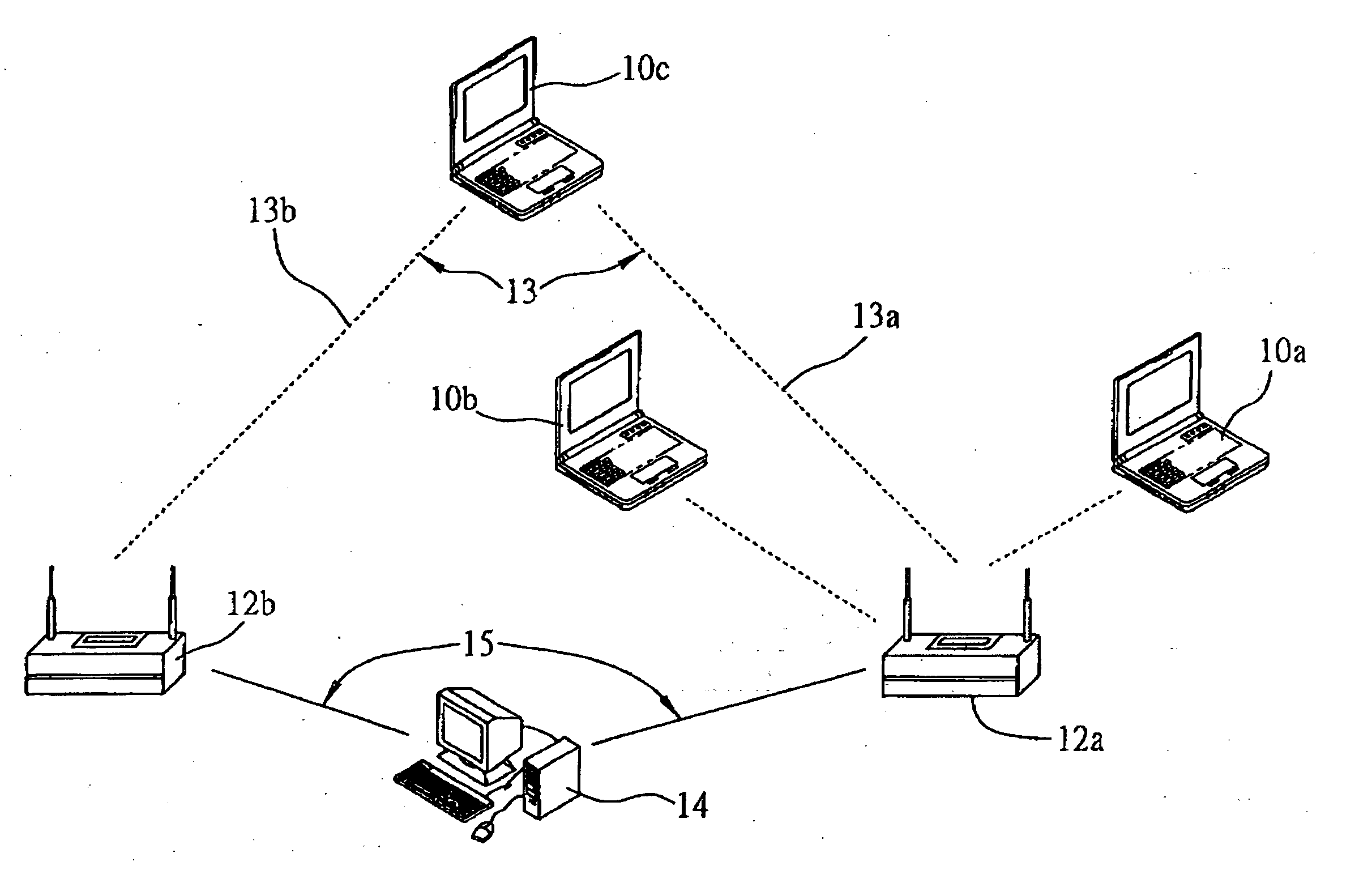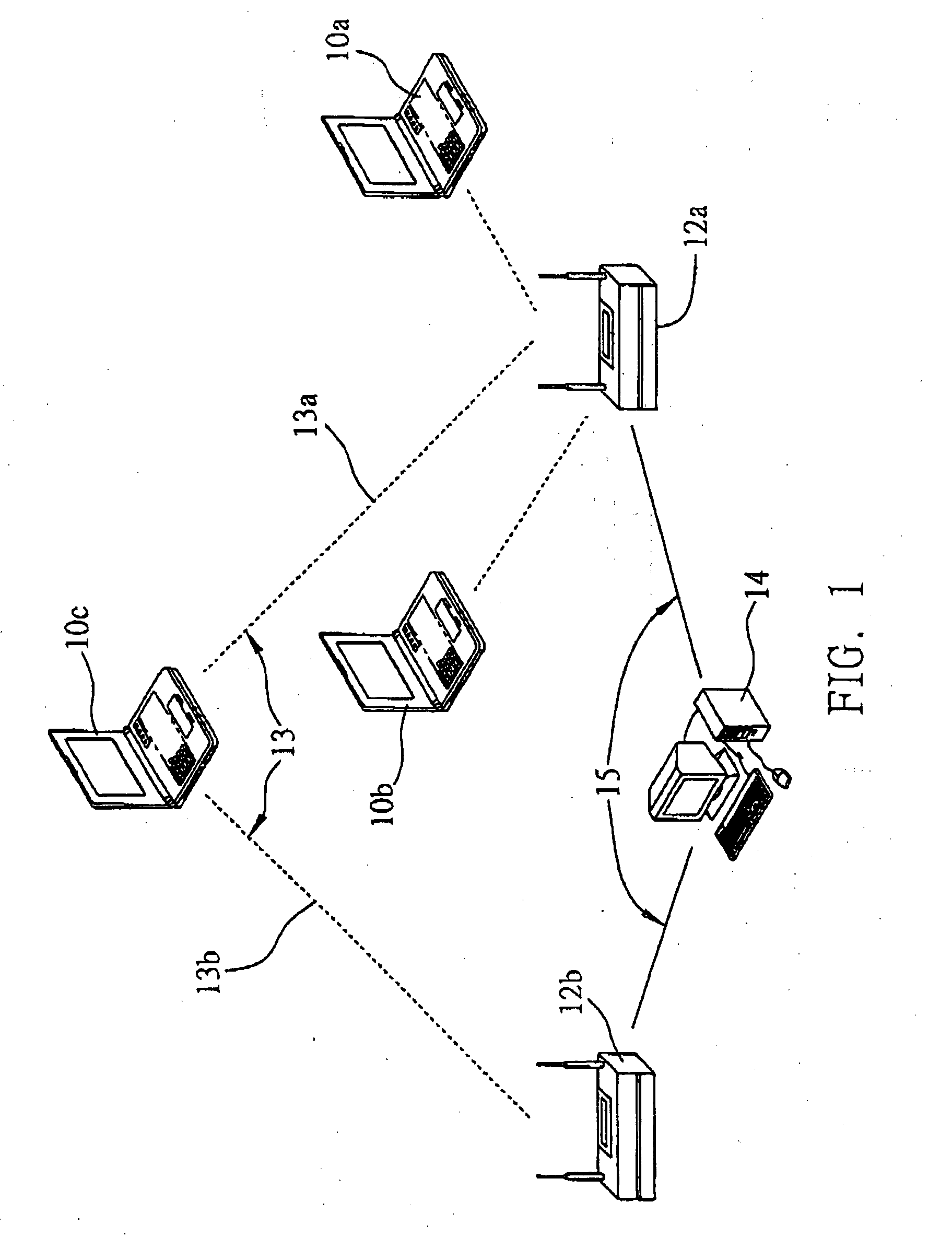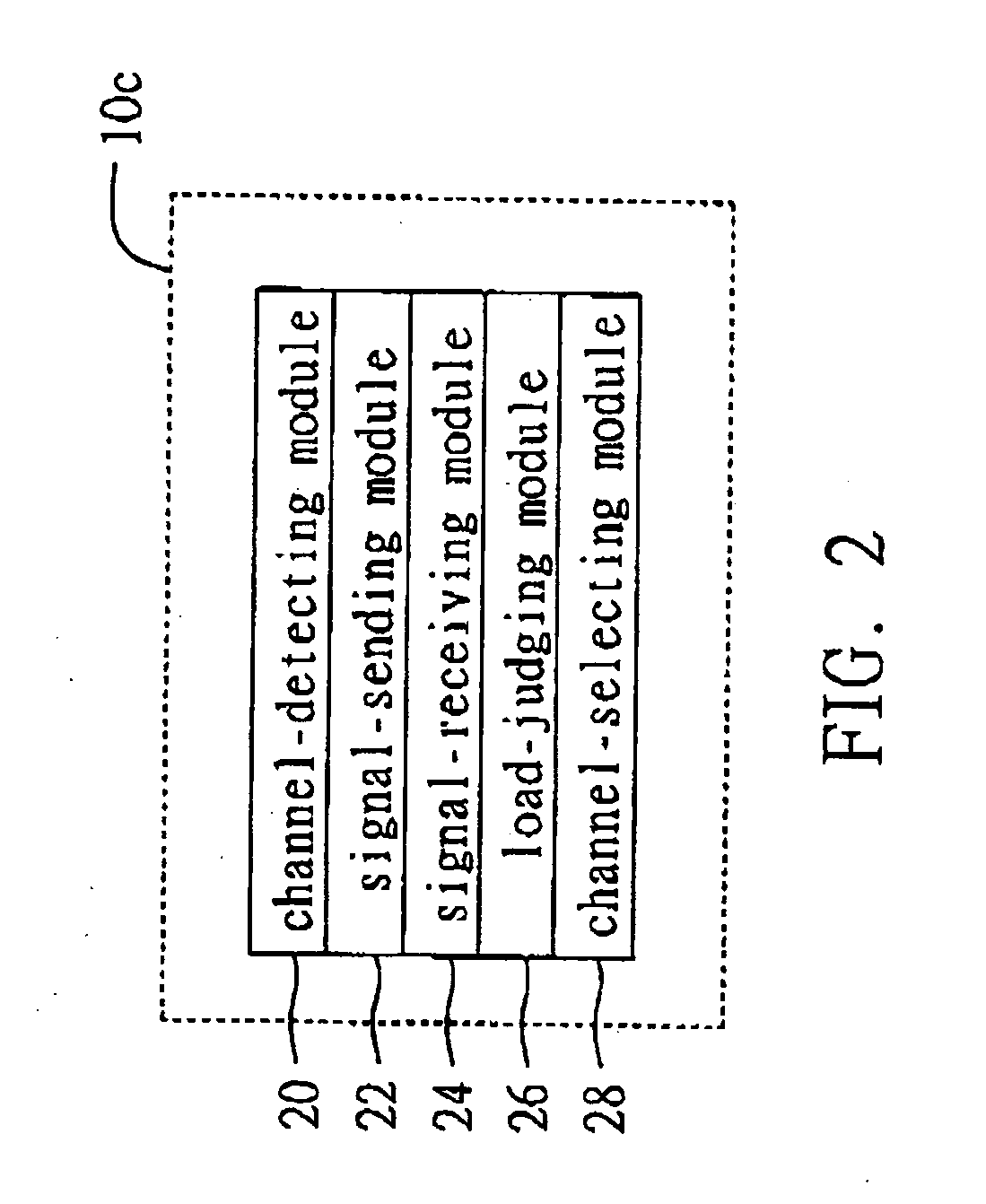Dynamic network load balancing method and system
a network load and load balancing technology, applied in the field of dynamic network load balancing method and system, can solve the problems of reducing utilization efficiency, difficult for users to monitor the use condition, and no station performs data transmission via the channel, and achieves the effect of high data transmission efficiency
- Summary
- Abstract
- Description
- Claims
- Application Information
AI Technical Summary
Benefits of technology
Problems solved by technology
Method used
Image
Examples
Embodiment Construction
[0017] The present invention is described in the following with specific embodiments, so that one skilled in the art can easily understand other advantages and effects of the present invention from the disclosure of the invention. The present invention may also be implemented and applied according to other embodiments, and the details may be modified based on different views and applications without departing from the spirit of the invention.
[0018]FIG. 1 is a schematic diagram showing application architecture of a dynamic network load balancing method and system according to the present invention. In the present embodiment, the application architecture comprises stations 10a, 10b and 10c, access points 12a and 12b and a remote file transfer protocol (FIT) server 14. The stations 10a, 10b and 10c are notebook computers having wireless network cards of IEEE 802.11b specification. The access points 12a and 12b are wireless data transmission routers with IEEE 802.11b specification. Fur...
PUM
 Login to View More
Login to View More Abstract
Description
Claims
Application Information
 Login to View More
Login to View More - R&D
- Intellectual Property
- Life Sciences
- Materials
- Tech Scout
- Unparalleled Data Quality
- Higher Quality Content
- 60% Fewer Hallucinations
Browse by: Latest US Patents, China's latest patents, Technical Efficacy Thesaurus, Application Domain, Technology Topic, Popular Technical Reports.
© 2025 PatSnap. All rights reserved.Legal|Privacy policy|Modern Slavery Act Transparency Statement|Sitemap|About US| Contact US: help@patsnap.com



